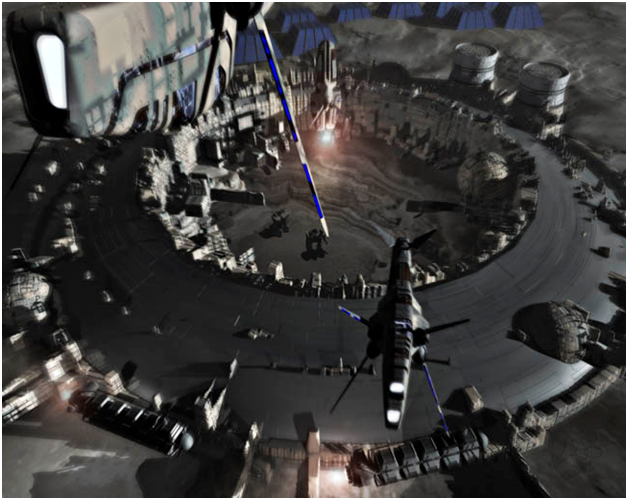Helium-3 is an isotope of helium. He-3 has two protons and one neutron. He-3 is found in the solar wind. The Earth's magnetic field pushes it away so little reaches the Earth. The Moon is thought to have significant He-3 because of billions of years of bombardment without a magnetic field to push away the He-3. When it was predicted in 1934, He-3 was thought to be radioactive. It was first recovered from natural helium in the atmosphere and natural gas wells in 1939 by separation from helium-4 which makes up most of the helium on Earth. Because it was found in underground natural gas deposits on Earth, it was concluded that either it did not decay or had a very long half-life of billions of years. Some of the He-3 on Earth is a relic of the atmospheric and underwater nuclear tests conducted before 1963. Tritium (H-3) from nuclear warheads, with a half-life of about twelve years, decays into He-3.
He-3 has been used in nuclear fusion research. It might be a potential fuel for fusion reactors if substantial quantities could be recovered from the surface of the Moon. It's primary current use is in the fabrication of sensors which can detect plutonium and uranium that might be used to make a "dirty" bomb. Plutonium and uranium emit neutrons which are difficult to detect. However, when a stray neutron hits an atom of He-3, a charged particle is generated which is much easier to detect. Because He-3 is nontoxic, nonradioactive and is a very accurate way to detect neutrons, it has been preferred in the creation of such sensor.
The only source of He-3 on Earth is recovery from decommissioned nuclear warheads. The United States has been reduced from the Cold War high of around twenty five thousand to about five thousand warheads today. The number of warheads being decommissioned has been diminishing steadily and, as a result, the supply of new He-3 has also been diminishing. The National Nuclear Security Administration which is responsible for production of He-3 did not see fit to inform the Department of Energy of He-3 shortages. DoE has spent over two hundred and thirty million dollars on the development of He-3 based sensors. Now that the shortage of He-3 has been revealed, the Defense Threat Reduction Agency (DTRA) is working to develop new technologies that can replace the current He-3 based radiation detectors.
Recently the DTRA awarded a contract of nearly three million dollars to Alion Science and Technology (AST) to work on development of new sensors. AST is working on developing neutron sensors based on bundles of thin copper tubes coated with boron. One advantage of the new sensor design is that, unlike the current He-3 based sensors, the AST sensor is able to determine the exact direction that the neutron is coming from. This new sensor design would be excellent for portable detectors or fixed sensors for port and shipping depots. With increased concerns over nuclear terrorism, neutron sensors will be a very important defense against the clandestine movement of radioactive materials.
Concept art of helium-3 mining operation on the Moon:
